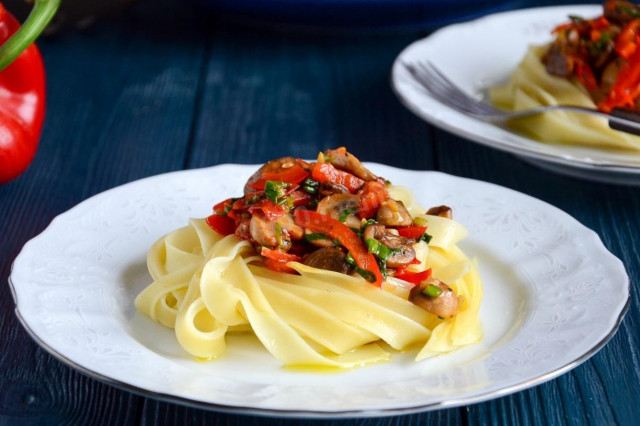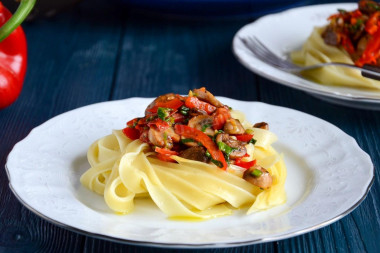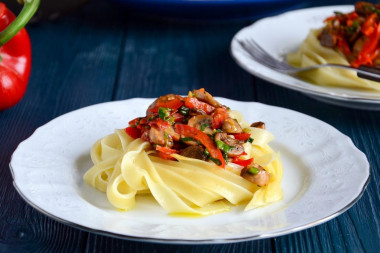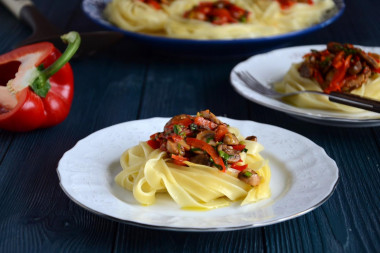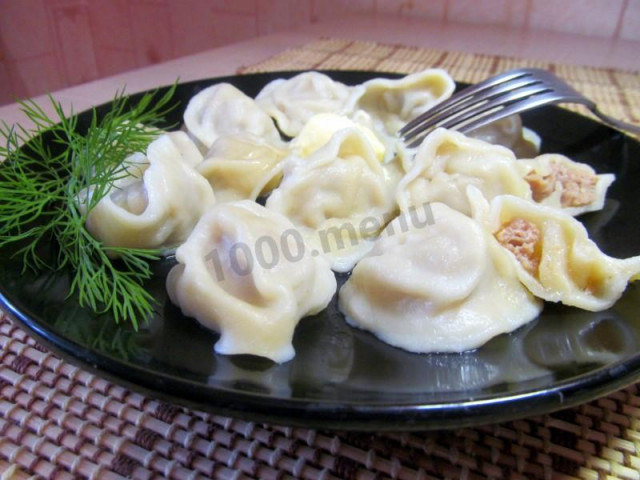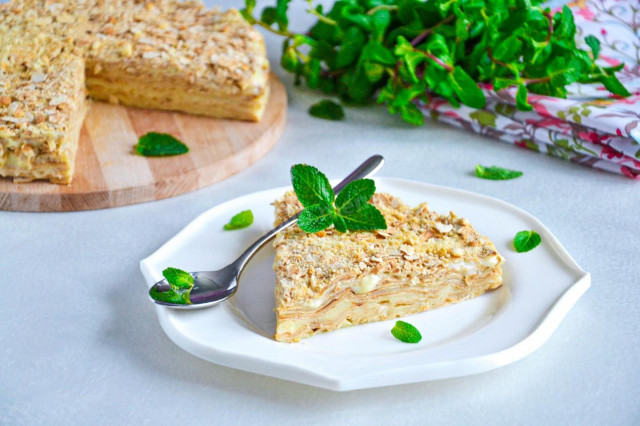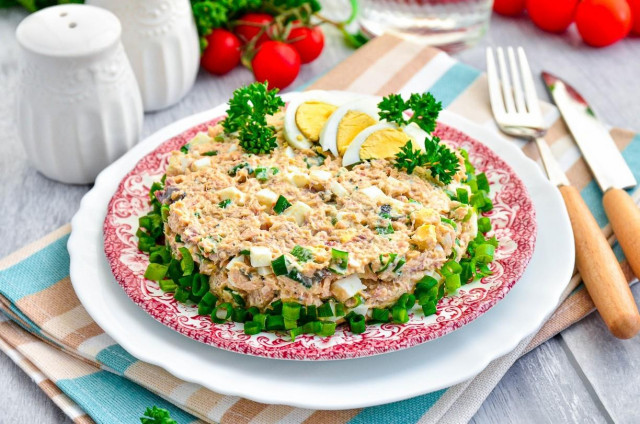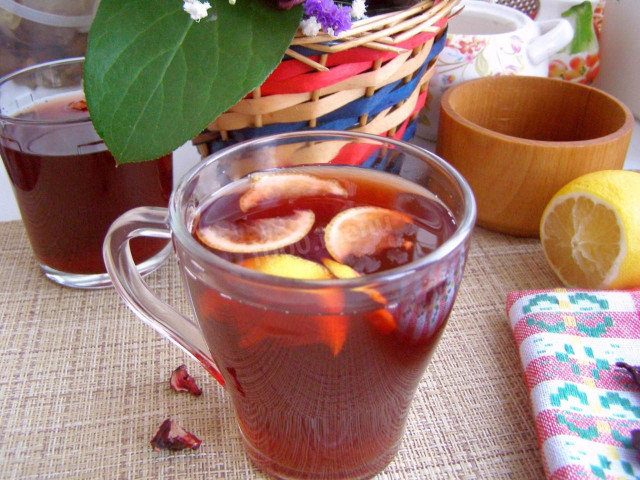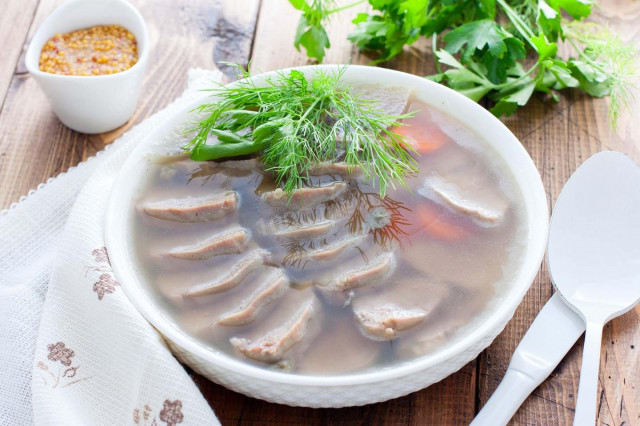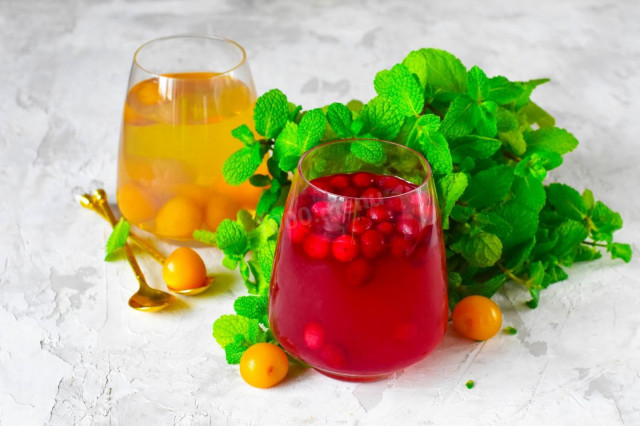Composition / ingredients
Step-by-step cooking
Step 1:
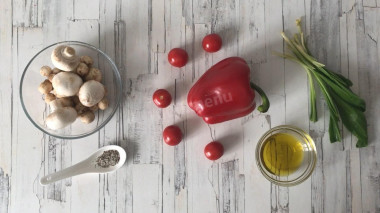
How to cook nests with mushrooms? Prepare the products for the filling. Instead of champignons, you can take any other edible mushrooms. You may have to boil them before frying (especially if you have wild mushrooms). Frozen and dried are also suitable. Wild cherry can be replaced with spinach. Or remove it altogether by adding cheese to the filling. Take juicy, ripe vegetables.
Step 2:
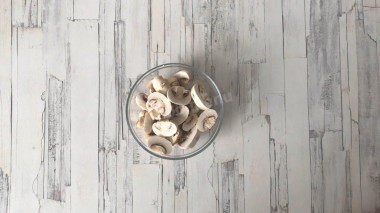
Wash the champignons, dry them and cut them into plates.
Step 3:
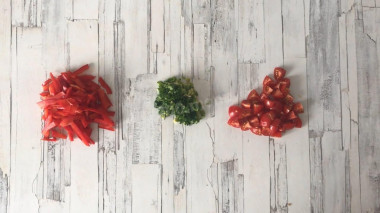
Wash and dry the vegetables and herbs. Cut the tomatoes into small cubes, cut the pepper into small strips, chop the cherry finely.
Step 4:
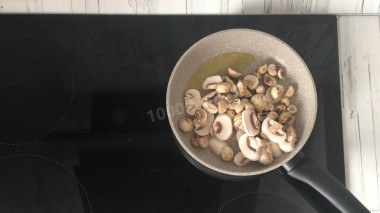
Heat vegetable oil in a frying pan (I have one tablespoon of olive oil). Put the mushrooms in a frying pan and fry them for about 3 minutes, stirring.
Step 5:
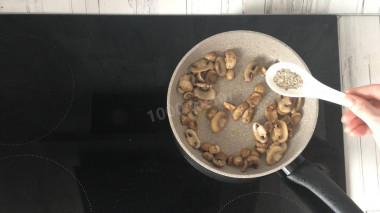
Add spices and salt to the mushrooms, simmer them for 3-5 minutes, stirring occasionally.
Step 6:
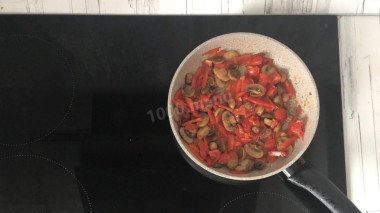
Add chopped tomatoes and bell peppers to the mushrooms. Mix it up. Simmer all together for about 10 minutes until the bell pepper is ready. I indicate the time approximately - you should always focus on your stove.
Step 7:
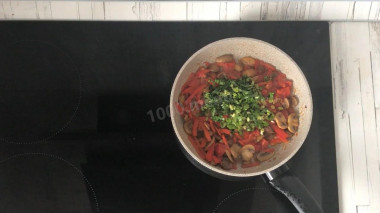
Put the wild cherry in a frying pan with other vegetables. Mix it up. Simmer all together for 2 minutes. Remove the pan from the heat.
Step 8:
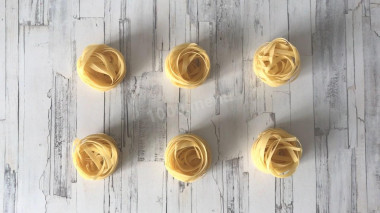
Start cooking pasta. I have these ready-made raw egg lashpi nests. You can take nests from classic pasta - thin or thicker. You can also form nests of boiled spaghetti yourself.
Step 9:
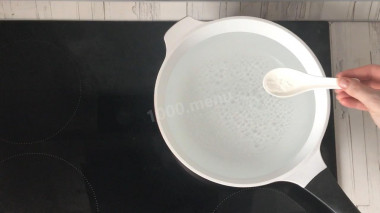
Boil water in a saucepan, add salt and 1 tbsp olive oil.
Step 10:
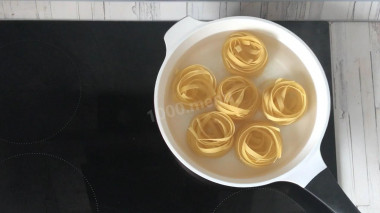
Carefully place the nests in boiling water.
Step 11:
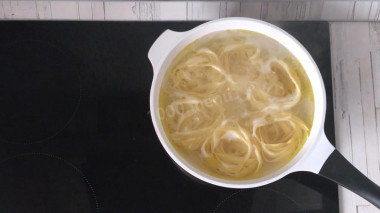
Cook the nests at a low boil for 5-7 minutes until tender. For more precise cooking, use the instructions on the pasta package.
Step 12:
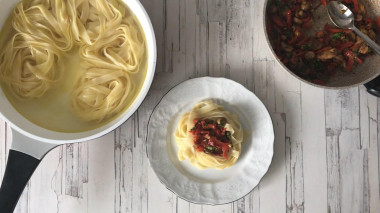
Carefully, trying not to damage, transfer the nests to plates. Put 1-2 tablespoons of filling inside each nest.
Step 13:
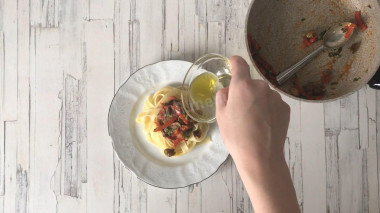
Sprinkle the dish with olive oil and serve.
At the very beginning of my passion for food photography, I made nests of pasta with minced meat and tomatoes in the oven. Despite the fact that I liked the dish then, I did not make such dishes anymore. But it is very convenient - both the side dish and the filling are being prepared at the same time. The pasta for this dish is suitable for classic pasta, as well as egg noodles in the form of nests.
How to boil pasta properly? Take a spacious saucepan, pour water at the rate of 100 grams of pasta 1 liter of water. The main thing is that the products float freely in the liquid. Add salt to taste. Bring the water to a boil. It is important to put the pasta in boiling water, otherwise they may stick together. Cook over medium heat, stirring occasionally, until fully cooked or al dente (cooking time is always indicated on the package). Put the finished pasta in a colander and let the liquid drain. It is not necessary to rinse the finished pasta with water. If you do not plan to immediately mix the pasta with the sauce, then in order to avoid sticking hot pasta, you can send them from the colander back into the pan and add a teaspoon of olive oil (or a piece of butter)and mix gently.
Use oil with a high smoking temperature for frying! Any oils are useful only until a certain temperature is reached - the point of smoking, at which the oil begins to burn and toxic substances, including carcinogens, are formed in it.
Unrefined oils, with rare exceptions, have a low smoking point. There are a lot of unfiltered organic particles in them, which quickly begin to burn.
Refined oils are more resistant to heating, and their smoking point is higher. If you are going to cook food in the oven, on a frying pan or grill, make sure that you use oil with a high smoking point. The most common of the oils with a high smoking point: refined varieties of sunflower, olive and grape.
Caloric content of the products possible in the composition of the dish
- Sweet pepper - 27 kcal/100g
- Champignons - 24 kcal/100g
- Ground black pepper - 255 kcal/100g
- Wild cherry - 35 kcal/100g
- Salt - 0 kcal/100g
- Olive oil - 913 kcal/100g
- Cherry tomatoes - 15 kcal/100g
- Pasta nests - 346 kcal/100g

